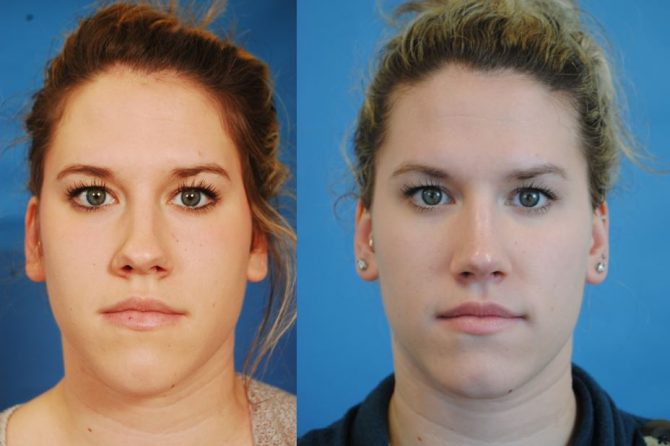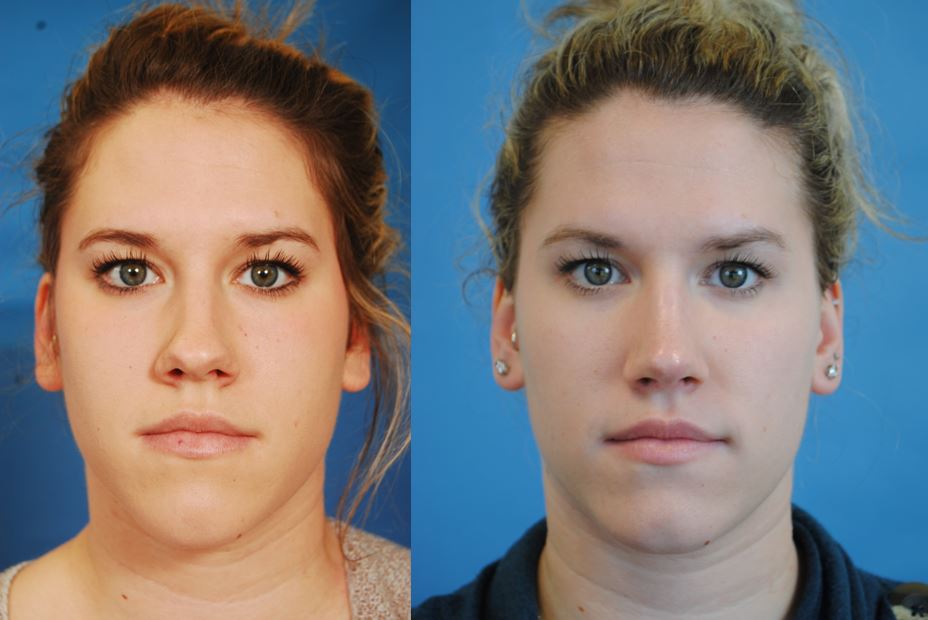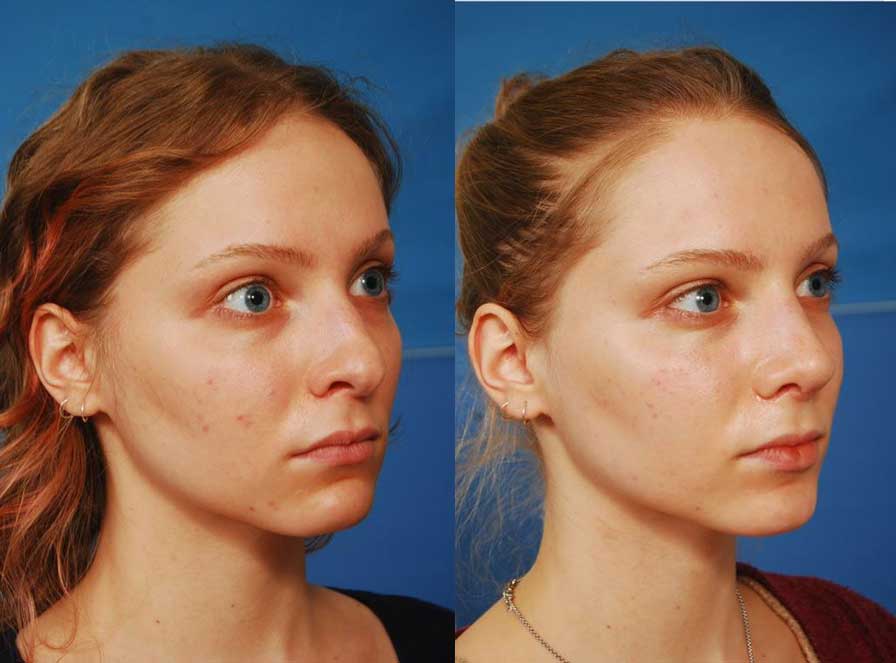
Guide To Before-And-After Rhinoplasty Photos
During your initial rhinoplasty consultation, I will snap a variety of photos of you in very specific views, the majority of which are done while aligning the top of the ear canal with the inferior orbital rim (the bony ridge below the eye). This is called the Frankfurt Horizontal Plane.
It’s important to take photos in this alignment to provide an accurate representation of the results. Photos can be deceptive if the patient is angled differently, wearing a different facial expression or degree of makeup, or being photographed with different lighting in the before versus after photo. You may have run across this if you have ever looked at facelift before and after pictures where the patient’s face is angling down in the before, but looking up in the after (the decrease in neck wrinkles in the post-op photo may be at least in part due to the posture change rather than the surgical intervention). The same general concept can hold true for rhinoplasty, which is why it is so important to have standardized photos.
After taking your photos, I will load them onto the computer and perform an in-depth analysis of your nose, from frontal, profile, base, and oblique (¾) views. We will discuss how changes to different areas of your nose may affect the appearance from each of these perspectives. With proper analysis and an open discussion about whether your aesthetic goals can be realistically met by surgery, rhinoplasty is most often a very rewarding procedure for both of us.
Rhinoplasty photos: frontal view
From the frontal view, concerns are typically about the width and/or straightness of the nose. Historically, nasal aesthetic ideals dictate that the widest part of the nose should be no wider than the distance between the eyes. The tip of the nose should be approximately half of the overall width of the nasal base. Asymmetry is most obvious on this view, too, as it is the one view in which direct comparison is possible between the two sides of the nose.
Rhinoplasty photos: profile view
From the side view (profile), the dorsum (top) of the nose should ideally start at the upper eyelashes for women and the upper eyelid crease for men. The tip should project away from the face approximately 55-60% of the total nasal length. The angle between the nose and the upper lip should be maintained between 95-105 degrees for women and 90-100 degrees for men.
Rhinoplasty photos: base view
This view is acquired by placing the tip of the nose in alignment with the top of the eyebrows. Ideally, the nostrils will be symmetrical on this view. Asymmetry on this view can be a sign of breathing obstruction, and can often be corrected by straightening out the nasal septum. However, it is important to note that base asymmetry may also be due to underlying maxillary (midfacial) structural asymmetry that is beyond the nose itself. It’s like putting a tent up on the side of a hill; it is very difficult to have a perfectly symmetrical tent if it is pitched on a slope. Many people with facial asymmetry don’t ever realize it until they are seen for evaluation. These potential asymmetries in facial projection do not get directly addressed by rhinoplasty, but we do have tools to help minimize these differences. Most humans have some degree of asymmetry, and a comprehensive rhinoplasty evaluation will be sure to touch on this.
Rhinoplasty photos: oblique view
The “oblique” or ¾ view is the most commonly-viewed angle in real daily life. This angle doesn’t show the results the most obviously, but gives you an idea of the subtle changes you’ll expect to see in photos and when catching a glimpse of yourself in a mirror.
Rhinoplasty photos: Altered photo versus actual results
One of the best tools to help communicate about rhinoplasty surgery is through images. To prepare for our visit, it is a good idea to bring in photos of noses you like, or a Face-Tuned image of yourself, which is a great way to visually express your desires. It will give us a jumping off point to discuss your desires and expectations for the outcome. During your consultation, we will look at photos of previous patients who have generously allowed me to use their images. You can take a look at some of the photos on the rhinoplasty procedure page for a sample. I will also take and edit your photos to give you an idea of what can be done. While digitally altered images may vary from actual surgical results, this process helps a great deal in clearly establishing the goals of surgery and helping to make sure your expectations are aligned with what I believe can be surgically accomplished.
Meticulous and standardized preoperative rhinoplasty photos are an integral part of the rhinoplasty consultation. These images are an excellent tool to facilitate the communication of your aesthetic goals, my recommendations for an optimal outcome, and ultimately our agreed-upon plan for helping you look and feel your absolute best.
Leave a reply





